Godmanchester Museum ‘Hunts Cyclist’
Another area of the museum display highlights the Hunts Cyclist Battalions, the county’s territorial regiment from around the time ofthe Great War (1914-18) Bicycles may not have had the endurance or versatility of the horse but their worth was shown in wartime, especially in South Africa during the Boer War (1899-1902). No longer now just scouts & messengers, the Cyclists’ role was likened to Mounted Infantry and Cyclist Sections within the volunteer forces were bolstered in 1908 with the formation of Cyclist Battalions.
By 1908 Huntingdonshire had lost all ‘ownership’ of its regular and territorial regiments so there was a keenness amongst many within the county to see the title ‘Huntingdonshire’ feature again in the army’s Order of Battle.
Thirteen Cyclist Battal ions had been formed across the country and plans to raise one more that would carry our county name, finally got the go ahead in Feb. 1914.
Recruiting to the eight Companies was brisk. Local solicitors and other professional men joined the Ot1icers’ Mess and the Earl of Sandwich became the Honourary Colonel. They were barely back from Territorial Force camp when war was declared and the Regiment mobilised.
Tasked for Home Defence, their orders were to guard the shoreline of Yorkshire, while a swiftly raised 2“d.Bn. would patrol the Lincolnshire coast. Although most of these men would later tight in France and beyond, they went as replacement drans and rebadged to other regiments. The Hunts Cyclists never fought overseas as a unit and as the war ground on men with no county loyalties joined its ranks.
ln 1919 the Regiment disbanded, but in 1920 from its ashes rose the 5`h.(Huntingdonshire) Bn. The Northamptonshire Regt. TA. and some surviving Hunts Cyclists rejoined the Colours to serve county and country once again.
Steve J. Sellwood
By Steve J. Sellwood
During the last quarter of the 19th Century the first tentative steps were taken both here and on the continent to make use of the bicycle as a machine of war. It seems they were first given a military role in Somina, Italy when cyclists were used as messengers during maneuvers.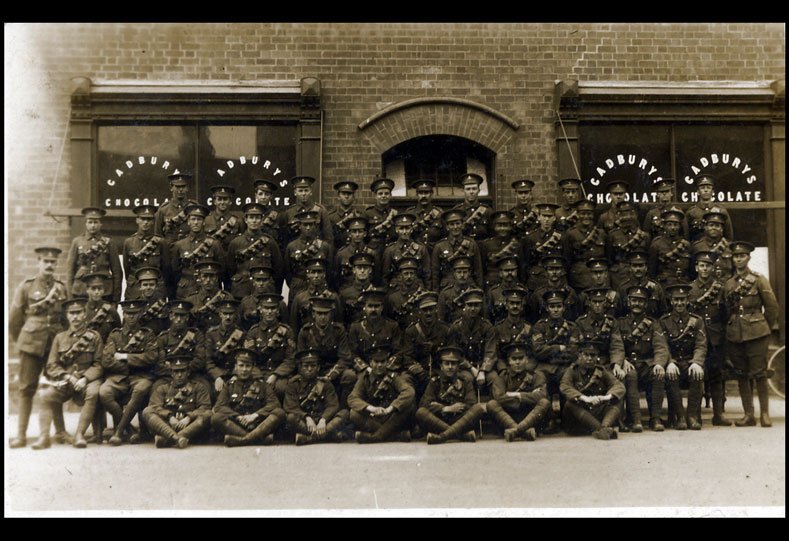
By 1885 cyclists were being deployed by several Continental armies and this was also the year cyclists were first reported operational in Britain. The Easter maneuvers that year saw the 1st Volunteer Battalion Royal Sussex Regiment using them as scouts in response to an opposing force that included mounted troops.
In December 1887 Lt. Col. A. R. Savile Professor of Tactics at the Staff College, Camberley a man who had already had experience of the cyclists military potential, was appointed as President of a committee to investigate the viability of military cycling and consider the kit and drill requirements. The men from the War office viewed the cyclists' duties as akin to those of Mounted Infantry rather than the less aggressive role of purely messengers.
On 24th February 1888 26th Middlesex (Cyclist) Volunteer Rifle Corps was formed, this was an all cyclist unit of 120 under the command of Lt. Col. A. R. Savile. Small Cyclist Sections were also formed within existing Volunteer Battalions and their performance during subsequent maneuvers proved their worth but also highlighted one or two drawbacks to their use.
The outbreak of the Boer War in 1899 gave the cyclists the chance to show their skills in action in the field under real war conditions. The city of London Imperial Volunteers was one of several cycling corps that were ready for action. The cyclists' main duty in S. Africa was dispatch-riding but other tasks did come their way, among them scouting along railway lines for sabotage using specially modified cycles that were joined together could be ridden along the rails.
In 1908 the Territorial Force was established. The 26th Middlesex (Cyclist) volunteer Rifle corps became the 25th (city of London) Battalion. The London Regiment and nine further Cyclist Battalions were formed at this time. Three of these were from existing Volunteer Battalions and every Territorial Infantry Battalion was given the go ahead to include a cyclist section on its strength. By 1913 the number of Cyclist Battalions had risen to 13 with one more in the pipeline, a Battalion from Huntingdonshire. One result of the Army reorganizations in 1908 was the loss to Huntingdsonshire of its Volunteer Territorial Battalion. The county's contribution was to be two companies of the 5th Battalion the Bedfordshire Regiment. In March 1913 the idea of forming an independent Huntingdonshire Territorial Cyclist Battalion went before the Huntingdonshire Territorial Association and its Chairman, the Earl of sandwich and following semi-official conversations and letters between the Association Headquarters Eastern Command, Lt. Col Butler (c.o. 5th Bedfordshire Regiment) and the War Office resulted in February 1914 the go ahead given for establishment.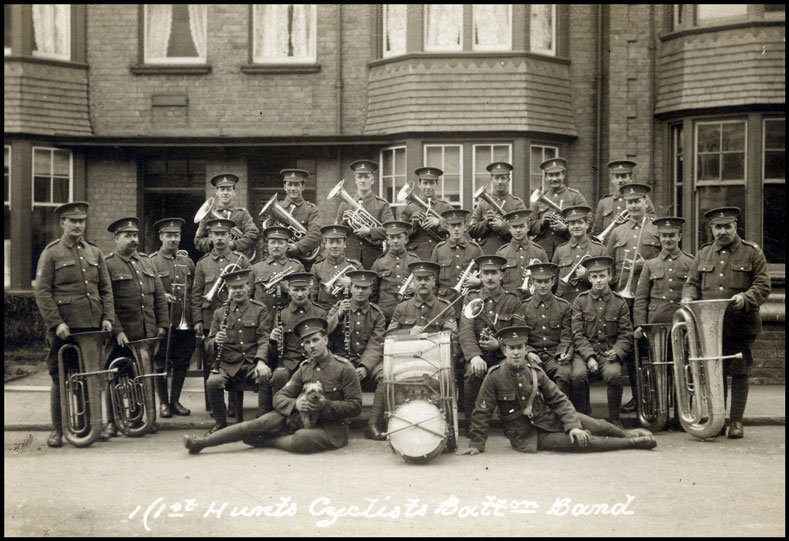
The Huntingdonshire Cyclist Battalion had an establishment of a Lt. Col. commanding and a Major Second in Command 8 Companies of 2 Officers and 54 men, 17 motorcyclists as signallers plus a Band. Major E. R. Herbert and captain S. G. Cook of the 5th Bedfordshire Regiment were promoted and appointed respectively the Commanding Officer and the Second in Command of the new Battalion, the Medical Officer was a Dr. J. R. Garrood of Alconbury Hill and the Padre the Rev. K. D. Knowles of Brampton Rectory. Amongst other Officers who joined the Cyclists were George Wyman Abbot a solicitor of Peterborough, Arthur Mellows also a solicitor of Peterborough and Kenneth Hunnybun Solicitor of Huntingdon.
The Honorary colonel of the newly formed Battalion was the Earl of sandwich and recruiting began on the 17th March that year. The officers and men from the two Huntingdonshire Companies of the Bedfordshire Regiment were offered a transfer into the Cyclists and based at the old Huntingdonshire volunteer's Drill Hall in St. Mary's street, Huntingdon with a Battalion Headquarters at Godmanchester, two of the companies (A and B) raised locally with the remaining companies formed at St. Ives and Somersham (c), St. Neots and Kimbolton t (D). Ramsey and Warboys (E) and Fletton, Stanground and Peterborough (F) and (G) with Yaxley and Farcet (H)
The Regimental Band was ready-made in the form of the Fletton Victoria Prize Band, a civilian Brass Band that had played at Territorial functions in the past and this Band joined up more or less on bloc.
Recruiting was rapid and in July 1914 the Battalion went off to Skegness for its first and as it turned out their only fortnight's Annual Territorial Camp although not with a full complement of officers and NCOs. The uniform was the regulation khaki service dress but by July moat if not all the men had also been issued with a blue webb cloth uniform not which was not unlike todays No. 1 dress in style.
Just days after they returned from their Camp, War was declared on August 4th and the Battalion was mobilised and two days later the 550 Officers and men left by train bound for the East Coast to Grimsby.
The Battalion was earmarked for a home defense role and their duties were to patrol the stretch of Yorkshire coast between Scarborough in the North and Spurn point near Grimsby in the South In the meantime back in Huntington, plans to muster a second Battalion of Huntingdonshire cyclists were hurriedly underway. In command of this was a Lt. Col. J. I. Stanley and once trained, this Battalion too were destined initially for coastal guard duties in Lincolnshire.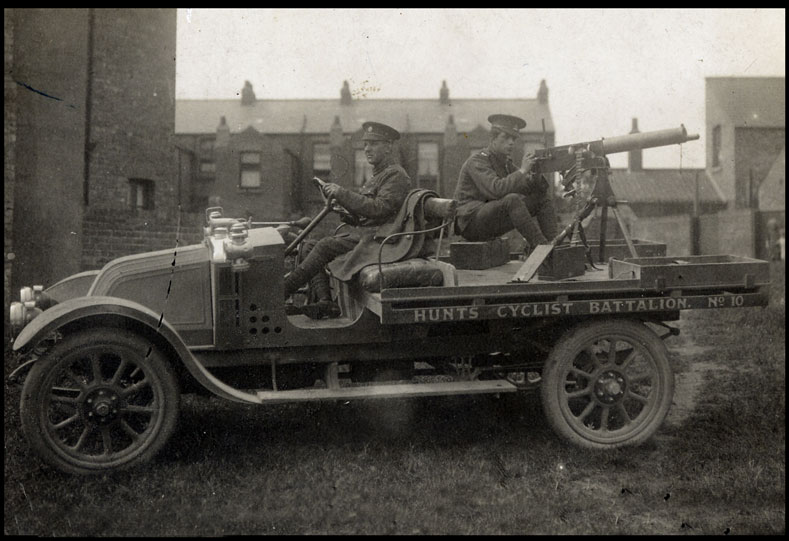
In the spring of 1915 a Third Battalion was authorized but it was never able to reach full strength and was subsequently disbanded and those men recruited shared between the other two Battalions. After almost two years of training and coastal patrols something like 90% of the First Battalion were drafted to France (28th July 1916) and like all those who followed them, they were rebadged to other Regiments. The Huntingdonshire cyclists were never able to fight as a unit outside these shores and as the war went on, men with no Huntingdonshire affiliations were drafted into the two Battalions.
The Armistice was signed on the 11th November 1918 and it was some time before the two Battalions were finally stood down. The 1st Battalion on the 14th April 1919 and the 2nd Battalion on the 12th December 1919.
A year after the 1st Battalion was disbanded it was to be reconstituted as the 5th (Huntingdonshire Battalion) The Northamptonshire Regiment and many of the serving Huntingdonshire Cyclists were able once again to enlist in their county Territorial Battalion.
Further reading on the Middlesex Cyclists can be found here.
The following article was published by the Strand Magazine in the early 1900's. The page title was "A Regiment On Wheels"
"WHERE is a house in the Queen's-road, Chelsea, which is not without its history. It stands exactly opposite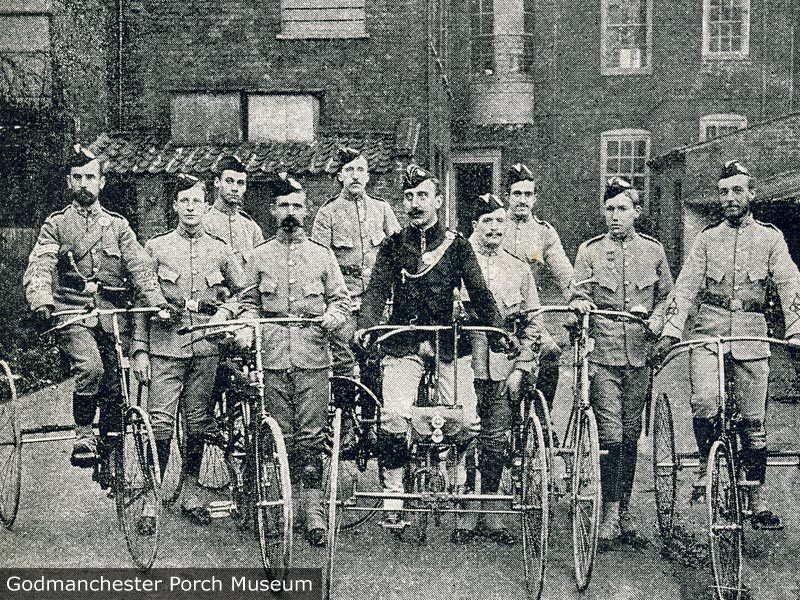 Middlesex Cyclists Chelsea Hospital, and there was a time when gay cavaliers of Charles II.'s reign frequented it, for in those merry days its first bricks revere laid. On the top floor a small apartment- is still to be seen, in the door of which is a small sliding opening capable of admitting the entrance and exit of a head. Not for decapitation, for tradition says that here stood the fashionable hairdresser, whilst handsome lords and fair ladies-placed their heads through the aperture to have their wigs powdered and prevent the spoiling of their silks and velvets. Here, too, cells with iron gratings in the doors may be found.
Middlesex Cyclists Chelsea Hospital, and there was a time when gay cavaliers of Charles II.'s reign frequented it, for in those merry days its first bricks revere laid. On the top floor a small apartment- is still to be seen, in the door of which is a small sliding opening capable of admitting the entrance and exit of a head. Not for decapitation, for tradition says that here stood the fashionable hairdresser, whilst handsome lords and fair ladies-placed their heads through the aperture to have their wigs powdered and prevent the spoiling of their silks and velvets. Here, too, cells with iron gratings in the doors may be found.
In 1820 the house was converted into a school of discipline, and so it remained until March of last year, when our regiment on wheels brought with them their iron steeds and transformed it into their " headquarters." Its solid mahogany doors and Ornamented marble mantelpieces remain as they were in the days of old its gateway is intact, and probably the same fine trees are flourishing, but outside in unmistakable capitals is written, " Headquarters, 26th Midx. Cyclists," with a substantial flag-staff visible. Its fifteen or sixteen rooms now comprise an armoury, with its repairing bench, arm stands, and innumerable lockers which are leased at a yearly rental of 2s. 6d. to the members. The sergeants' mess is a cosy abode, and the officers' room—to which a corner devoted to smoking is attached—is furnished in a style approaching luxuriousness with basket and velvet pile chairs.
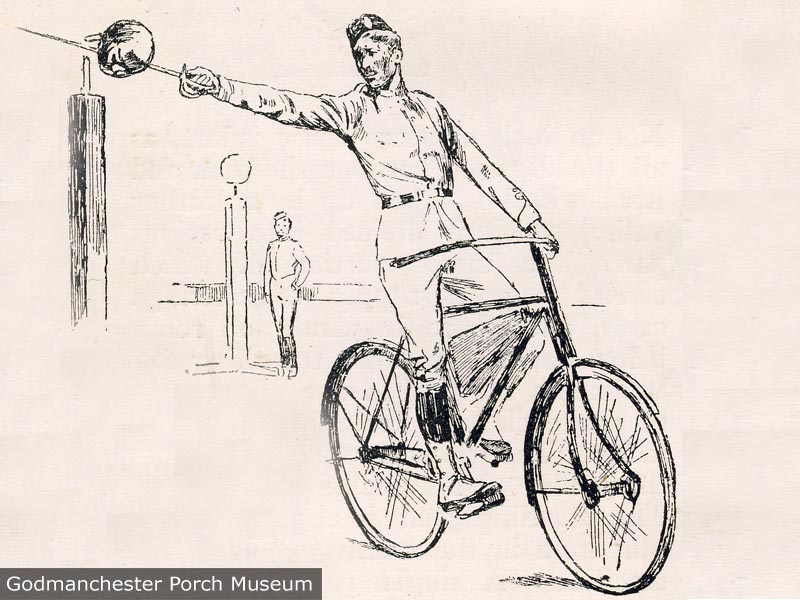 Head and PostThere is an excellent lecture-room, various offices, and the all important canteen, the speciality of which are its pork pies and sausage rolls, dear to the heart and soothing to the appetite of all average cyclists. . Round its walls are many a fine military picture_ "Floreat Etona" and " The Last Eleven at Maiwand" " General Roberts " and " Lord Wolseley," the "Queen" and the "Prince of Wales." There, too possibly as a reminder to cyclists of the distant climes to which their machines may yet travel on active service.
Head and PostThere is an excellent lecture-room, various offices, and the all important canteen, the speciality of which are its pork pies and sausage rolls, dear to the heart and soothing to the appetite of all average cyclists. . Round its walls are many a fine military picture_ "Floreat Etona" and " The Last Eleven at Maiwand" " General Roberts " and " Lord Wolseley," the "Queen" and the "Prince of Wales." There, too possibly as a reminder to cyclists of the distant climes to which their machines may yet travel on active service.
Are picturesquely arranged assegais, Indian knives, and. Burmese drums, which an enthusiastic cyclist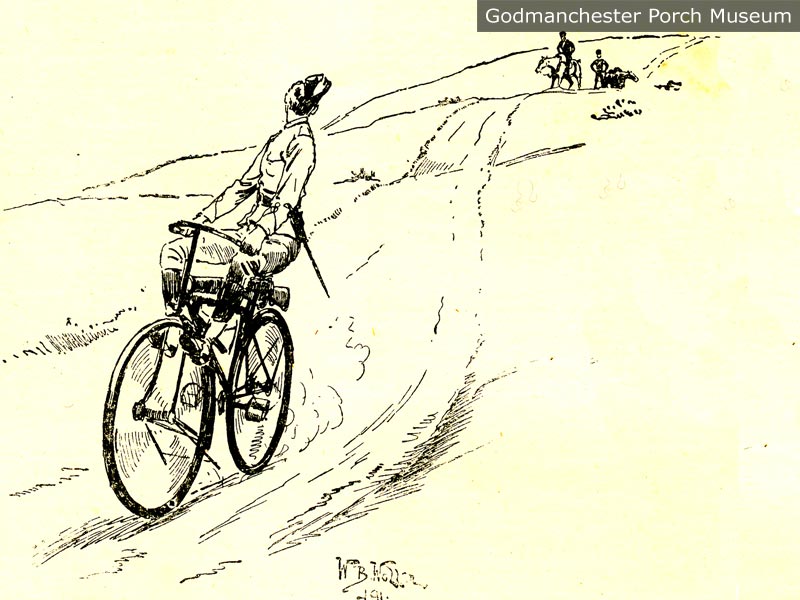 Horses v Cyclists took down from his oven bedroom and transported to Chelsea. Look into the garden, some 150 yards long, where drills are held when the corps is not at the Guards barracks, and peep in at the stable, There fifty or sixty machines may be easily be accommodated. Such are the headquarters of the only Volunteer regiment on wheels in the country—the pioneer corps amongst all volunteers.
Horses v Cyclists took down from his oven bedroom and transported to Chelsea. Look into the garden, some 150 yards long, where drills are held when the corps is not at the Guards barracks, and peep in at the stable, There fifty or sixty machines may be easily be accommodated. Such are the headquarters of the only Volunteer regiment on wheels in the country—the pioneer corps amongst all volunteers.
We are not unmindful of the useful work of our cyclists amongst the regulars. They are a goofily body, and at Aldershot a remarkable multicycle called a "Victoria " may be seen, capable of carrying a dozen riders, and conveying provisions and ammunition, &c. Neither do we forget that to-day amongst all the volunteer battalions throughout the kingdom nearly every one of them has a cyclist section attached to it, amounting in all to some 5,IOO men, credit going to " The Artists " for holding the riding record. Twelve " artistic" cyclists, under command of Sergeant Dixon, last year rode a distance of I02 miles in I6 hours 55 minutes, fully armed, and out of this time they were forced to halt for five hours owing to an accident, making the actual riding time a trifle over the twelve hours.
But, seeing that Sir Evelyn Wood has expressed the opinion that Parliament could not make a mistake in sanctioning the raising of at least 20,000 volunteer cyclists, and Lord Wolseley has shown himself so strongly in favour of them to quote his speech, he said: " There are very fever countries in the world where you cannot use cycles. During the wartime I was in India during the mutiny, I do not remember except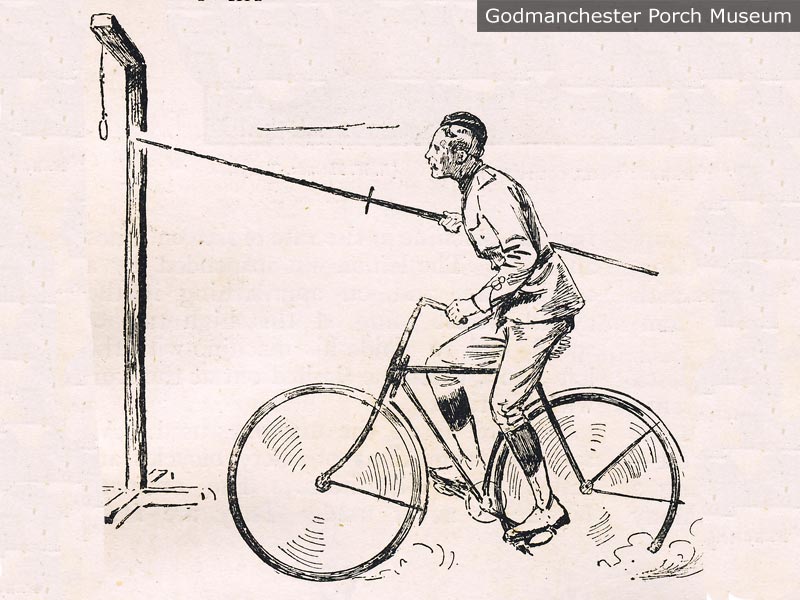 Lemon Cutting when actually in the hills for three or four days' fighting I do not remember one day's march, or any one fight in which we took part, where cyclists could not have been used with the greatest possible advantage "Be are inclined to single out this regiment on wheels the 26th middlesex who started with a handful of men as recently as April I, 1888, and whose work cannot but prove highly interesting to the 800,000 cyclists throughout Great Britain.
Lemon Cutting when actually in the hills for three or four days' fighting I do not remember one day's march, or any one fight in which we took part, where cyclists could not have been used with the greatest possible advantage "Be are inclined to single out this regiment on wheels the 26th middlesex who started with a handful of men as recently as April I, 1888, and whose work cannot but prove highly interesting to the 800,000 cyclists throughout Great Britain.
Who suggested military cycling? There can be very little doubt that the idea of utilising wheels far military purposes has been brought over from the Continent. Italy appears to be first in the field; for, during the manoeuvres of 1875; a service of cyclists at Somma were called into requisition for carrying messages to and fro. Both Germany and Austria have also found work for the military cyclists; and, during the French autumn manoeuvres of 1886, their skill as letter carriers was again put to the test. The honour of introducing the fighting cyclist in England apparently belongs to Colonel Tamplin who employed them as scouts during the Easter manoeuvres of 1885 though attention was drawn to this now important subject by Lieut. General J. Sprot four years previously. Colonel Strafed, of the Scots Guards, has also taken a great interest in this matter. We shall probably be correct in saying that no one has done more to popularise the movement than Lieut. - Colonel A. R. Savile, who is the commanding officer of the regiment on wheels.
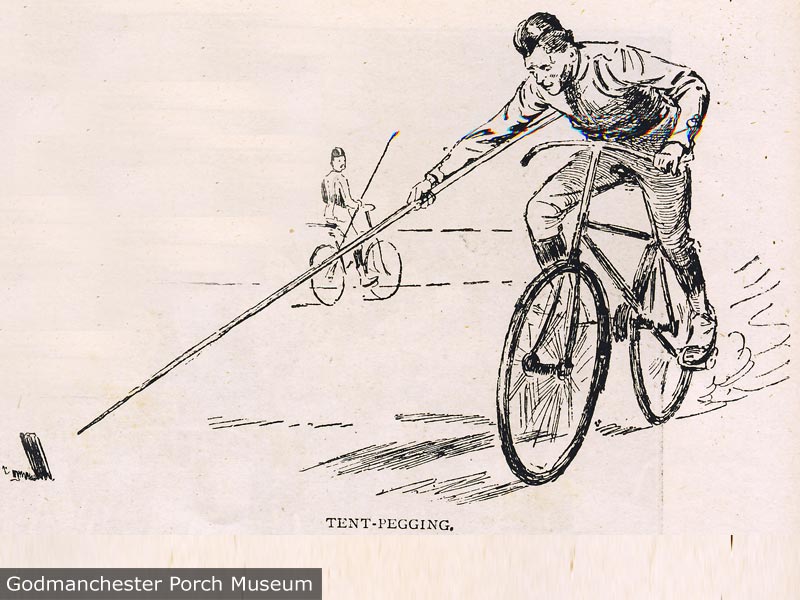 Tent PeggingLieut.- Colonel -. Savile is himself a thorough soldier, and is generally considered to be a thorough tactician, and an excellent cyclist. He joined the Royal Irish in 1863, soldiered up to 1888 when he retired, belt before six weeks were up, owing to his love of soldiering and cycling he found himself a member of the 26th Middlesex, which regiment he now commands.
Tent PeggingLieut.- Colonel -. Savile is himself a thorough soldier, and is generally considered to be a thorough tactician, and an excellent cyclist. He joined the Royal Irish in 1863, soldiered up to 1888 when he retired, belt before six weeks were up, owing to his love of soldiering and cycling he found himself a member of the 26th Middlesex, which regiment he now commands.
The full strength of the 26th Middlesex Cyclists Corps is a hundred and twenty there being two companies, one in the South Of London, the other in the West and already they contemplate starting a fresh corps in the North of London. Many people are, no doubt sceptical as to what this very formidable body are capable of in the way of useful work. Possibly it may be remembered that, at the Military Exhibition held last year, they showed their capabilities by performing a number of what might be termed fancy feats on the cycle, as smartly and successfully as our regulars do on horseback.
We give a picture of the body of men who, under the command of Capt. Phillips, gained the first prize in the Drill Competition, whilst the abilities of the members composing the team were recognised by the presentation of a silver medal to each one of them. Those who have seen them lemon-cutting, tent-pegging, and tilting at the ring may be interested to Know that the cyclist, in order to bring about a successful operation, found it necessary to ride his machine at the rate of sixteen miles an hour. The lemon was suspended by a single wire, and, on approaching it, the cyclist, whilst going at this high rate of speed, had to guide his machine with the left hand, whilst he slashed out at the fruit With his right.
A word about the machines used. All sorts and conditions of safety bicycles are called into requisition. The ordinary bicycle is never used.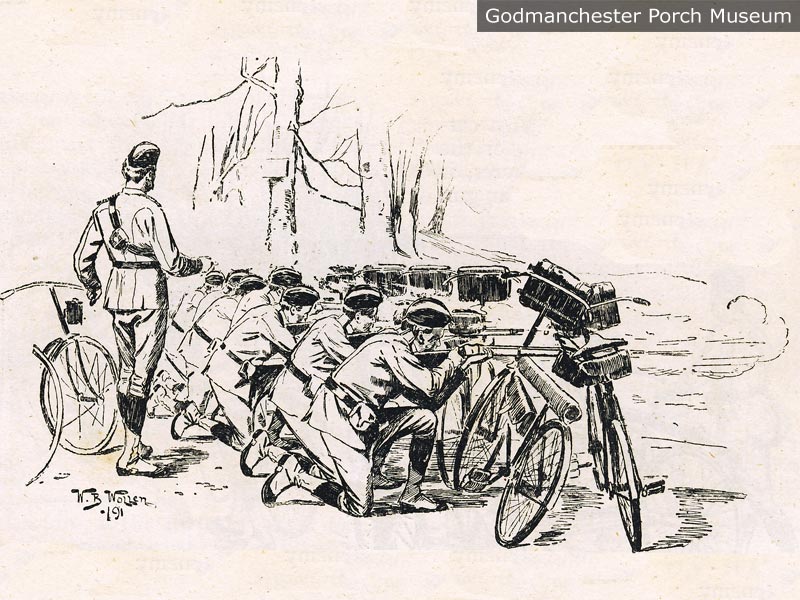 Cover They are fitted up so as to carry the rifle at the side, which can be taken out in three seconds, a pouch carrying one hundred rounds of ball cartridge, signalling flag, &c. the whole weight of which is something under 70 lbs., including machine. When in full marching orders they Acts get along at the rate of ten mile an hour, and often faster.
Cover They are fitted up so as to carry the rifle at the side, which can be taken out in three seconds, a pouch carrying one hundred rounds of ball cartridge, signalling flag, &c. the whole weight of which is something under 70 lbs., including machine. When in full marching orders they Acts get along at the rate of ten mile an hour, and often faster.
We hear the latest invention in the way of military cycles is one by Mr. W. J. Cocks, of Ealing. This cycle has received the approval of some of the military authorities and below we give a sketch of the same. It shows at a glance all the weapons of warfare carried by the cyclist. The sign ailing flag is carried in a semi-per-pendicular position down the front fork. The rifle is to the right of the rider, lying in a central position along the centre of the machine.
Not an inch of spare space is lost, as all the distance between the back and front wheel is taken up by a leather valise, which is divided into various parts, the upper portion of which carries a- good supply of cartridge cases, and there is plenty of room below for the various travelling instruments required in case of accident to the cycle, and for all other necessaries. The whole thing weighs some° thing like 56 lbs. including the rifle. The standing gear is a very important item in the construction of this machine. A single prop or - leg is removed by the feet from a spring clip, the upper portion of which engages with the mud guard, passing through the same and putting a break on the wheel thus preventing the machine moving forward or the wheel turning to an angle the cycle leaning on the side prop still out of 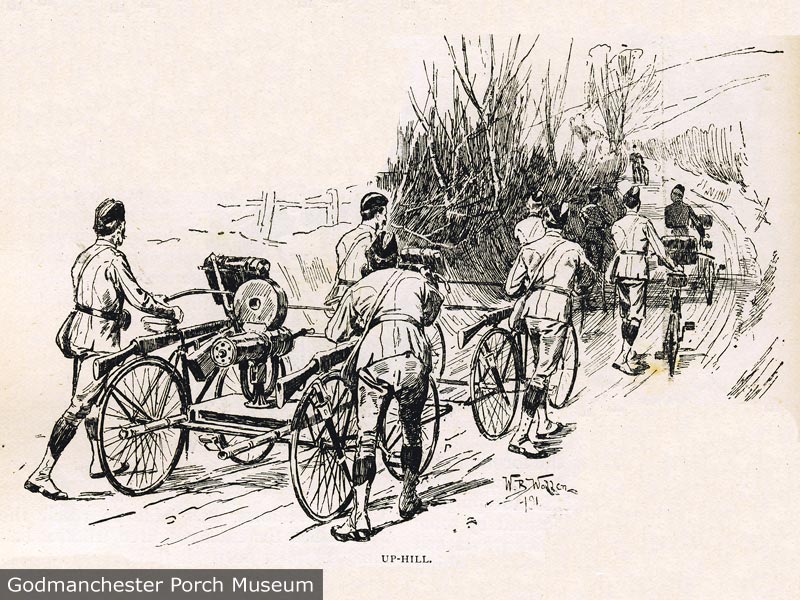 Up Hillthe vertical, Fixed to the handle bar is a valise, in which can be carried the kit.
Up Hillthe vertical, Fixed to the handle bar is a valise, in which can be carried the kit.
It seems probable that in time of action the mounted cyclist will be able to get within an easy distance of the field, dismount and detach his rifle in a couple of seconds, put his machine in a place of safety, and be on the scene of action quicker than he could by any other means. Amongst the smartest things which our fighting cyclists are capable of doing with machines is the forming of a zereba for the defence of a road, as shown in our illustration. This is for the purpose of resisting cavalry, and is formed by some twenty or thirty machines, which are stacked on to one another; the men getting behind the cycles and firing at the approaching enemy.
Page 1 of 2 Continue